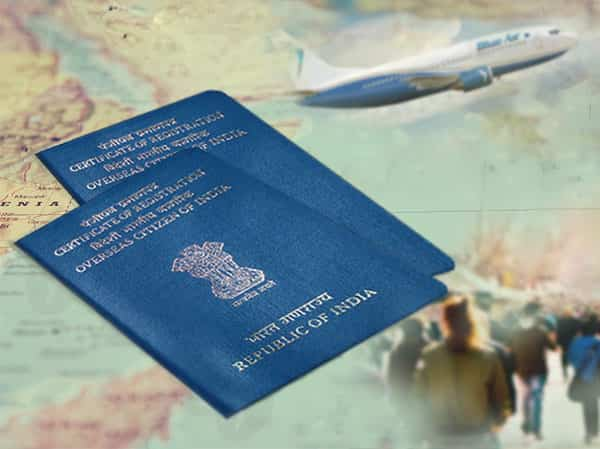New OCI Portal Update: In a major digital boost for the diaspora, Union Home Minister Amit Shah on Monday launched a newly revamped version of the Overseas Citizen of India (OCI) portal, promising a much smoother and more user-friendly experience for people of Indian origin looking to register as OCI cardholders.
Calling it a step towards “world-class immigration facilities”, Shah said the move reflects the Modi government’s commitment to making processes more efficient and citizen-friendly. “Many Indian-origin citizens live across the world, and we must ensure they face no inconvenience when they come to visit or stay in India,” he said.
The new portal, which is available at the same link as before—https://ociservices.gov.in—comes with better security, easier navigation, and a bunch of new features aimed at simplifying the application process.
What’s new in OCI portal?
According to the Ministry of Home Affairs (MHA), the earlier OCI portal was built back in 2013. While it was functional across more than 180 Indian missions abroad and 12 FRROs in India, handling around 2,000 applications daily, the tech needed an upgrade. With feedback from users and a decade of digital advancements, the government has now completely revamped the system.
Prime Minister Narendra Modi also hailed the new portal, calling it a “major step forward” in boosting citizen-centric digital governance.
What is OCI?
OCI stands for Overseas Citizen of India. The scheme, launched in 2005 through an amendment to the Citizenship Act, allows persons of Indian origin (PIOs) to register as OCI cardholders. However one cannot avail the scheme if he or she either is or was a citizen of Pakistan or Bangladesh, or has their parents, grandparents, or great-grandparents from either Pakistan or Bangladesh.
How to register on new OCI portal in 2025
If you’re a person of Indian origin living abroad and planning to apply for an OCI card, here’s a step-by-step breakdown of how to do it on the revamped portal:
Step 1: First, see if you are eligible
The first criterion for the OCI card application is to have post-1950 Indian origin. If you or your forefathers were from Pakistan or Bangladesh, you are, however, not eligible.
Step 2: Collect the documents
- A currently valid passport (any passport with less than six months’ validity will not do)
- Proof of Indian origin (cancelled Indian passport, birth certificate, etc.)
- Proof of address for the present
- If applying as a spouse, a marriage certificate and either the Indian passport or OCI card of the spouse
Step 3: Initiate your application
Go to https://ociservices.gov.in and select the option for “New OCI Registration.”
Step 4: Fill in part A
Enter your personal details here. Based on your entries, the portal will display the document requirements and eligibility conditions.
Step 5: Upload the photo and signature
Upload a recent passport-size photograph and a signature or thumb impression (for minors) in JPEG format. There is a cropping option available within the portal to help you crop the images.
Step 6: Fill Part B and Upload Documents
Upload scanned copies of your documents as single PDF files. Combine pages if you need to.
Step 7: Double-check
Go through your application one last time. Edit if anything needs change, up until submission.
Step 8: Pay fee
- If you’re applying from India, pay Rs 15,000 online.
- If you’re applying from outside India, check with your nearest Indian embassy or consulate to know how to pay.
Step 9: Send printed application
After submitting the form online:
- Print both Part A and Part B of your form
- Attach self-attested copies of your documents and a passport-size photo
- Submit everything to your local FRRO office (if you’re in India) or the Indian Embassy/Consulate (if you’re abroad)
Step 10: Track your application
You can check your application status on the same website. The portal has a dashboard, and you’ll also get email updates as your application moves forward.
Anurag Dhole is a seasoned journalist and content writer with a passion for delivering timely, accurate, and engaging stories. With over 8 years of experience in digital media, she covers a wide range of topics—from breaking news and politics to business insights and cultural trends. Jane's writing style blends clarity with depth, aiming to inform and inspire readers in a fast-paced media landscape. When she’s not chasing stories, she’s likely reading investigative features or exploring local cafés for her next writing spot.






